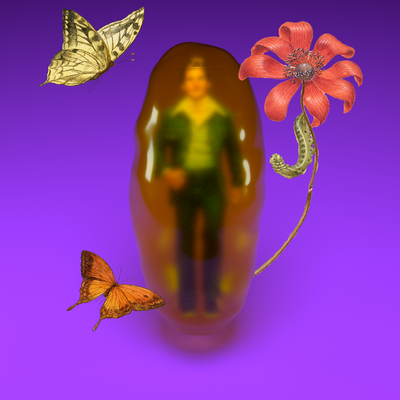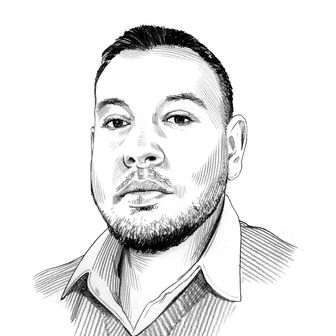
This column first ran in John Paul Brammer’s Hola Papi newsletter, which you can subscribe to on Substack.
¡Hola, Papi!
Like many others, I realized I wasn’t a cisgender woman during the pandemic. After months of soul searching, I settled on a label that felt right: nonbinary transmasculine.
Before, when I thought about the future, I simply couldn’t see myself existing as a person at all. It’s not that I wanted to die; I just didn’t know how I wanted to live. But now, Papi, I can see glimpses of the kind of person I want to be, and it gives me a glimmer of hope.
Unfortunately, these revelations all came while I was living with my Indian immigrant parents who were absolutely gutted when I previously came out as queer. They never accepted it, even after we reconciled, so I knew I could never tell them about being trans. Additionally, my therapist at the time told me she didn’t feel equipped to help me with trans issues and suggested I find one with more expertise, so we parted ways.
I processed all these big emotions privately through journaling and finding support from my online friends. Late last year, I started planning a move to New York City where I have a core group of supportive friends waiting for me in person. Just a few weeks ago, I finally made it here. I even went to a Pride event dressed in nonbinary flag colors, and it was great.
But the truth is, Papi, I’m still terrified. Even though I’m thousands of miles away from my family, I feel like I’m still stuck in the little box of options they created for me. I’m afraid that to live my dream would be to destroy my parents’ dreams, and I don’t know how to make peace with that fact or how to get their voices out of my head so I can finally experiment with my gender presentation in peace.
I’m afraid of being accused of selfishness for prioritizing my happiness. I’m afraid I will never make peace with this reality. I’m afraid of all the hatred out there and the rapid proliferation of anti-trans laws in this country. I’m afraid I’ve been closeted for so long that I’ll never look outwardly queer enough to be accepted in queer spaces. I’m afraid I’ll never find a therapist who understands. I’m afraid that nobody will ever see me as anything but the woman I’m not.
For months I’ve felt like I’ve been in a cocoon of metamorphosis, a gooey, undefined version of myself, and I don’t know what the end state is going to look like. I’m marinating in discomfort, yearning to come out of this process on the other side as a fully realized and visible nonbinary person, comfortable in queer spaces and unapologetic about being myself. But I’m so scared of the process of getting there and how long it might take, given the decades of repression I still have to unravel.
So, Papi, how do I embrace the uncertainty and trust the process?
Signed,
Cowardly Caterpillar
Hey there, CC!
Thank you for sharing your journey with me. As a writer, I love a good extended metaphor. It can be meaningful to find symmetries between your experience and something out there in nature, like the caterpillar or the butterfly, those classic symbols of transformation.
I also love troubling and undoing metaphors, because a metaphor is an imperfect vessel for the truth, and the truth is that you are nothing at all like a caterpillar. The caterpillar, you see, is aware of its marching orders from the moment it hatches. It eats, and eats, and eats, and never once stops to think, Why am I eating so much?
From there, the caterpillar cocoons itself and sets about becoming — I imagine it doing this very matter of factly, with a serious look on its caterpillar face — a butterfly, likely never once thinking in the dark of its temporary home, I can’t wait to be a butterfly, or asking, But what am I, who am I, here in the phase between caterpillar and butterfly?
Out of the unquestioned cocoon emerges the butterfly, the creature we draw and paint and point to in poetry, which has goals of its own: Make caterpillars. This beautiful winged animal, if it were to dream, would likely dream of the thing we think so beneath it, its less attractive, lower form: It would dream of caterpillars.
The butterfly likely doesn’t feel it has lived its whole life in anticipation of becoming itself. The butterfly is simply a caterpillar that has successfully arrived at its colorful finish. On average, they will die within weeks. This is fine because, to the bug, the individual is unimportant.
Human life is a very different affair. We don’t intrinsically know who we’re supposed to become. And indeed, what makes humans unique is that we each become something unlike anyone else. There’s no moment of arrival, no moment where we realize, Hey, I have wings now! Metamorphosis, for us, happens in subtler shades. We are (often painfully) aware of ourselves, and as animals driven by and attracted to storytelling, we believe the journey needs to mean something. We need to be going somewhere, becoming something, living toward a desired self.
And just like metaphors are imperfect, so too are narratives in general. Very few of us can ascribe our lives to the contours of a princess in a castle waiting to be rescued, or a bildungsroman, or that of a tragic hero. The reality is, CC, for you and for me, there is no set destination. There is no definite point of emergence, when we can be assured that, yes, this is who and what we’re supposed to be.
In life, there will be moments when you’ll be confident in yourself, and the whole of your life will arrange itself neatly into an arc of arrival: Look at everything I’ve overcome to become myself, to be where I am now. Then there will be moments of undoing, when it seems like you made a wrong turn and ended up far from where you aimed to go.
Our wings tend to fold back up for long stretches of time. Our splendid colors rescind. The mission becomes unclear: What am I doing?
This is even more pronounced, I think, among queer people. Many of us have embarked on journeys of self-discovery and transformation. We are intentional about taking the base elements of ourselves and rearranging them into something that more closely resembles our truth.
It’s a beautiful thing but also a stressful one. There’s a real pressure to hew as close as possible to our grand vision, something we are destined to fall short of because the vision itself isn’t static. It changes with us, and the goalposts inevitably move. Butterflies don’t have Instagram feeds littered with prettier or happier butterflies.
As a human, as a person who has set about the long and arduous process of change with intention, you’re doing just fine, CC. I can’t guarantee you’ll get all the positive feedback you’re looking for, or that it will be easy, or that there is a finish line to cross.
The butterfly isn’t a perfect model for you in this case, I think. You’re a human. You get to create yourself every day.
Con mucho amor,
Papi
Originally published on July 19, 2022.
This column first ran in John Paul Brammer’s Hola Papi newsletter, which you can subscribe to on Substack. Purchase JP Brammer’s book Hola Papi: How to Come Out in a Walmart Parking Lot and Other Life Lessons, here.





